Abstract
Moskowitz, Merwin (Purdue University, Lafayette, Ind.). Separation and properties of a red cell sensitizing substance from streptococci. J. Bacteriol. 91:2200–2204. 1966.—An antigen that binds onto red cells and causes them to be agglutinated by antiserum was separated from streptococci. Various procedures to extract the antigen from streptococci were investigated, and the greatest amount of antigen was obtained by extraction of cells with a phenol-water mixture. The reaction of the antigen with red cells was shown to be reversible by use of the Ashby mixed agglutination technique. The antigen also combines with a number of different tissues, and it was demonstrated that the antigen could be transferred from red cells to tissues and vice versa. An hypothesis is presented on the basis of these findings which suggests a possible role for this antigen in the etiology of rheumatic fever.
Full text
PDF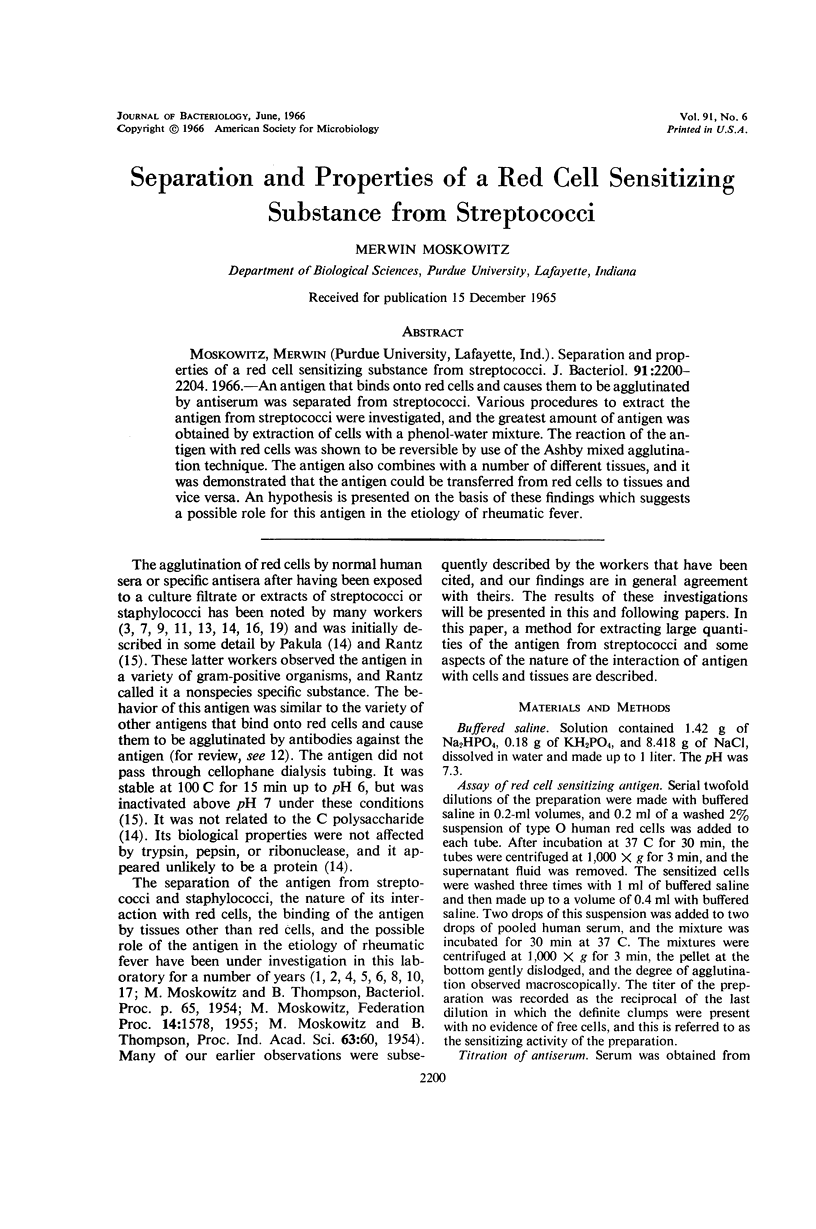
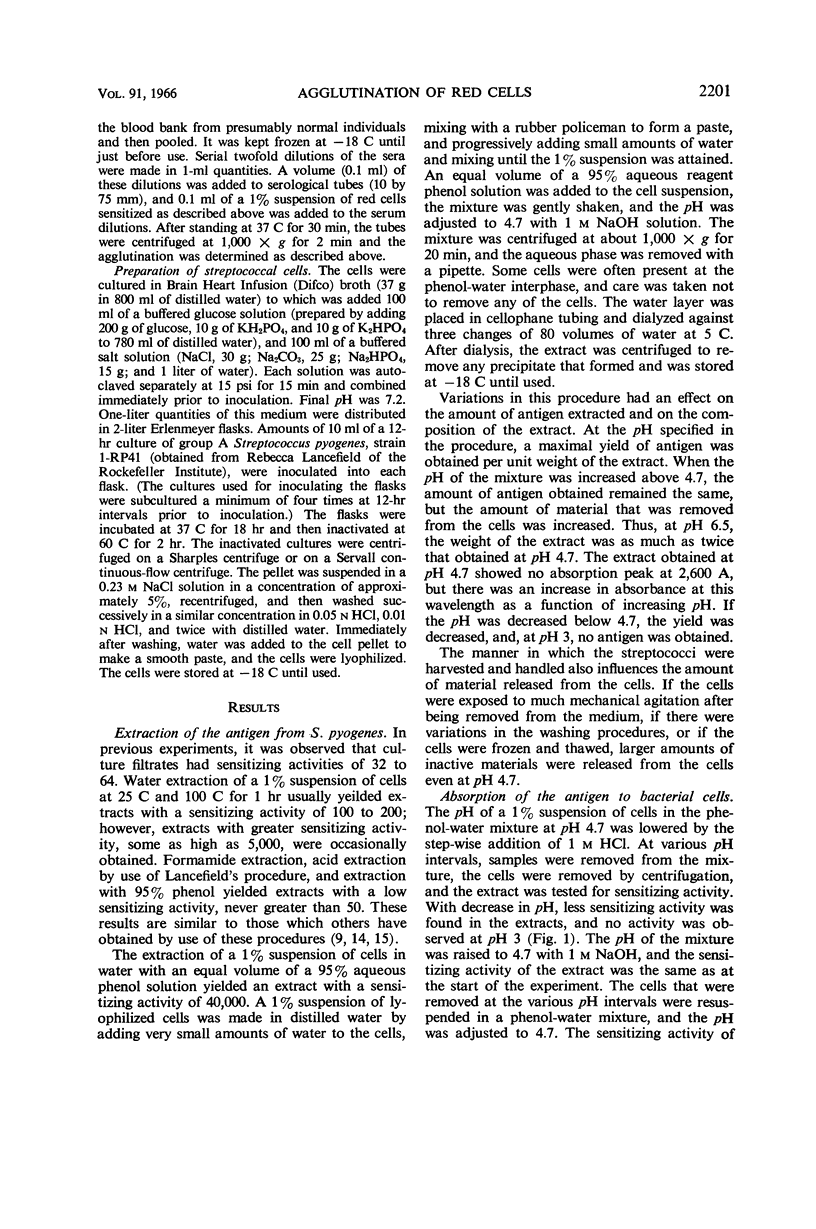
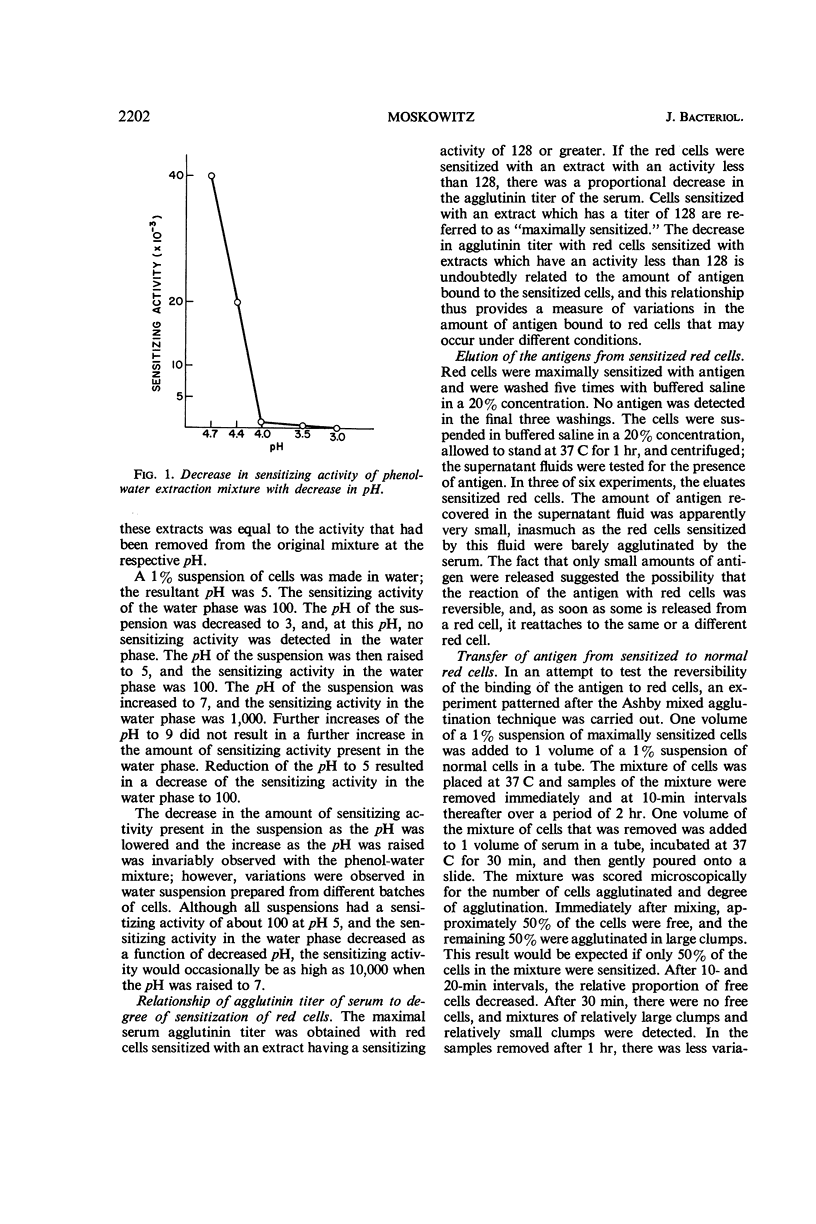
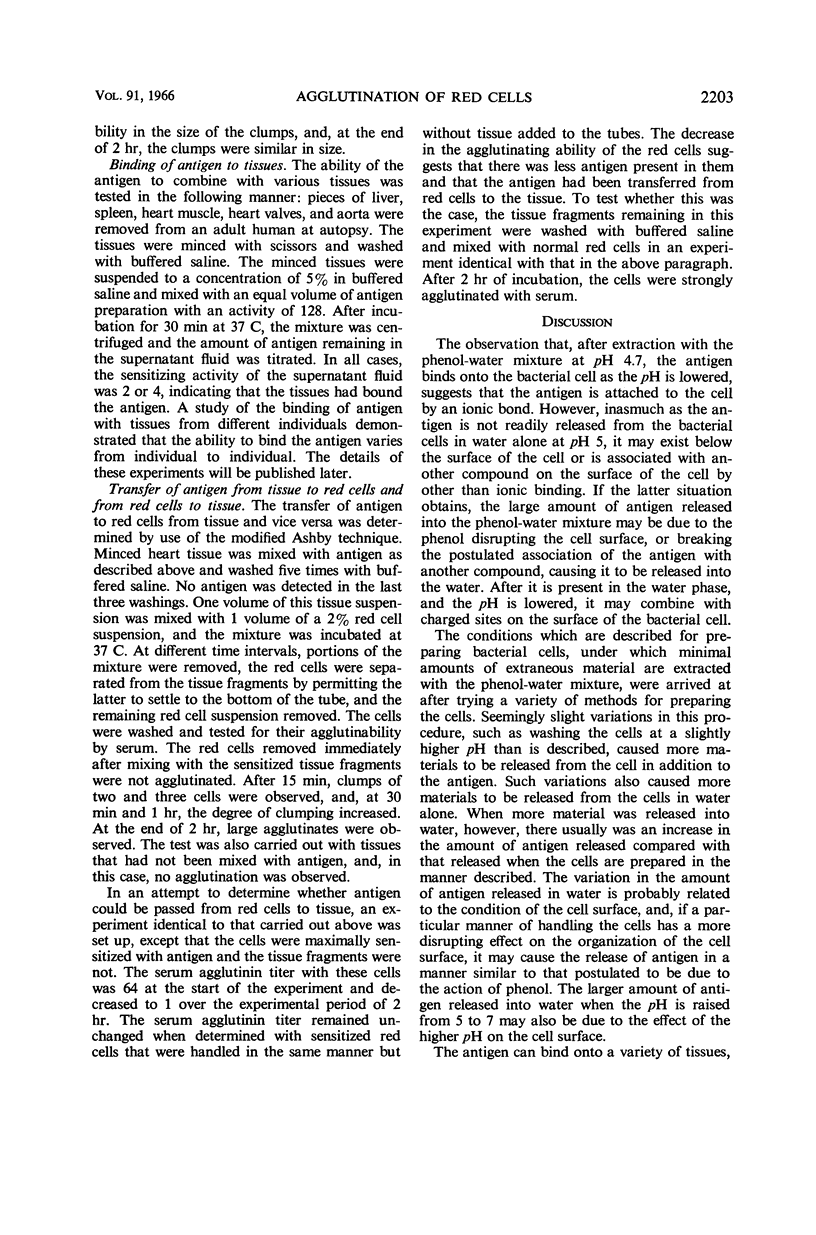
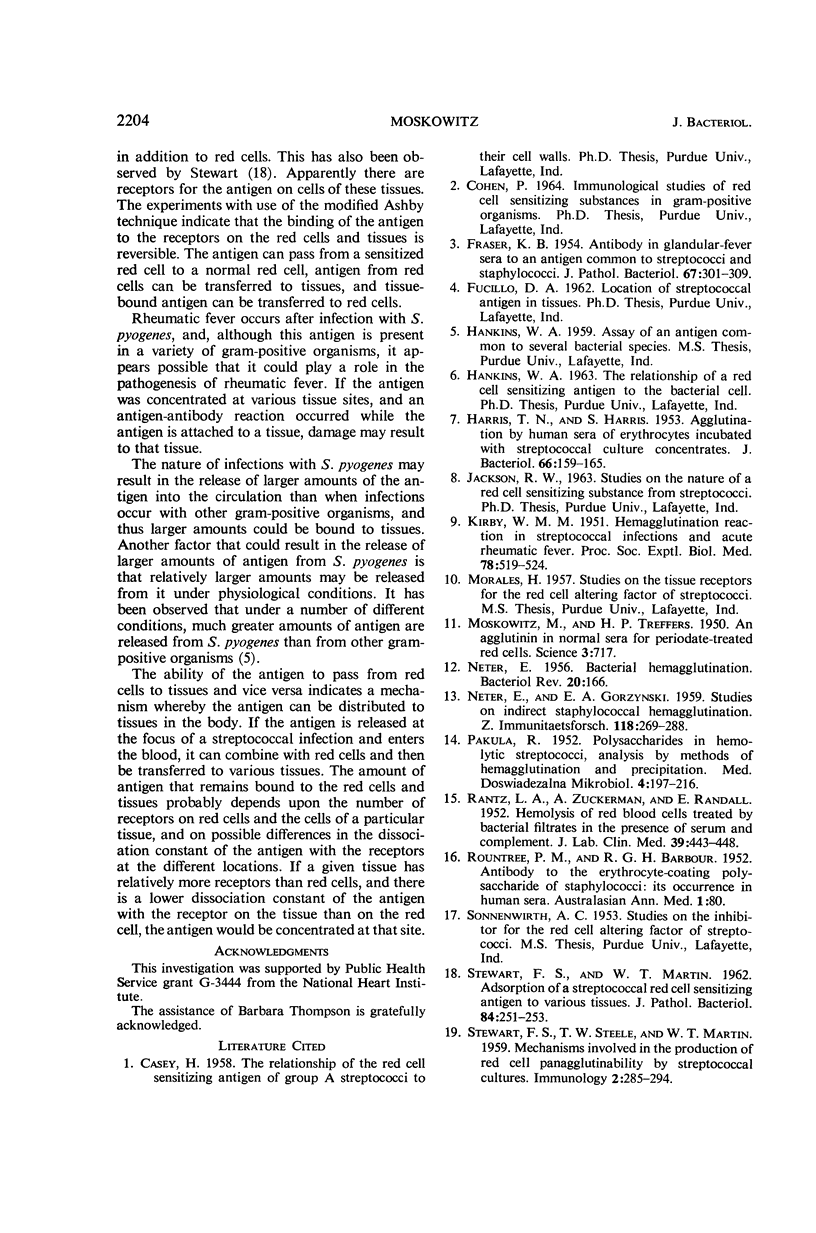
Selected References
These references are in PubMed. This may not be the complete list of references from this article.
- FRASER K. B. Antibody in glandular-fever sera to an antigen common to streptococci and staphylococci. J Pathol Bacteriol. 1954 Apr;67(2):301–309. doi: 10.1002/path.1700670203. [DOI] [PubMed] [Google Scholar]
- HARRIS T. N., HARRIS S. Agglutination by human sera of erythrocytes incubated with streptococcal culture concentrates. J Bacteriol. 1953 Aug;66(2):159–165. doi: 10.1128/jb.66.2.159-165.1953. [DOI] [PMC free article] [PubMed] [Google Scholar]
- KIRBY W. M. M. Hemagglutination reaction in streptococcal infections and acute rheumatic fever. Proc Soc Exp Biol Med. 1951 Nov;78(2):519–522. doi: 10.3181/00379727-78-19125. [DOI] [PubMed] [Google Scholar]
- MOSKOWITZ M., TREFFERS H. P. An agglutinin in normal sera for periodate-treated red cells. Science. 1950 Jun 30;111(2896):717–719. doi: 10.1126/science.111.2896.717. [DOI] [PubMed] [Google Scholar]
- NETER E. Bacterial hemagglutination and hemolysis. Bacteriol Rev. 1956 Sep;20(3):166–188. doi: 10.1128/br.20.3.166-188.1956. [DOI] [PMC free article] [PubMed] [Google Scholar]
- NETER E., GORZYNSKI E. A. Studies on indirect staphylococcal hemagglutination. Z Immun exp ther. 1959 Oct-Nov;118:269–288. [PubMed] [Google Scholar]
- PAKUŁA R. Ró3znorodnoś wielocukrów u paciorkowców hemolitycznych; analiza metoda hemaglutynacji I precypitacji. Med Dosw Mikrobiol. 1952;4(2):197–216. [PubMed] [Google Scholar]
- RANTZ L. A., ZUCKERMAN A., RANDALL E. Hemolysis of red blood cells treated by bacterial filtrates in the presence of serum and complement. J Lab Clin Med. 1952 Mar;39(3):443–448. [PubMed] [Google Scholar]
- ROUNTREE P. M., BARBOUR R. G. H. Antibody to the erythrocyte-coating polysaccharide of staphylococci; its occurrence in human sera. Australas Ann Med. 1952 May;1(1):80–83. doi: 10.1111/imj.1952.1.1.80. [DOI] [PubMed] [Google Scholar]
- STEWART F. S., MARTIN W. T. Adsorption of a streptococcal red cell-sensitising antigen to various tissues. J Pathol Bacteriol. 1962 Jul;84:251–253. doi: 10.1002/path.1700840135. [DOI] [PubMed] [Google Scholar]
- STEWART F. S., STEELE T. W., MARTIN W. T. The mechanisms involved in the production of red cell panagglutinability by streptococcal cultures. Immunology. 1959 Oct;2:285–294. [PMC free article] [PubMed] [Google Scholar]


